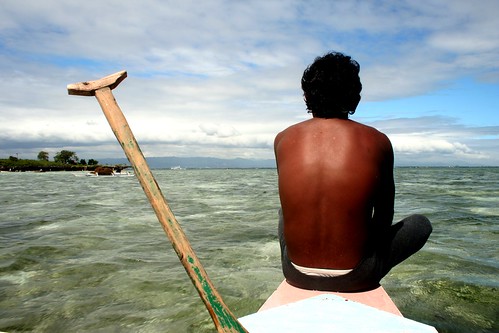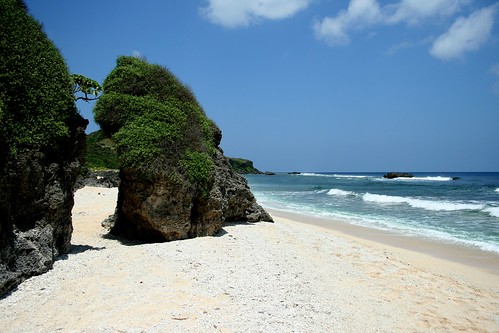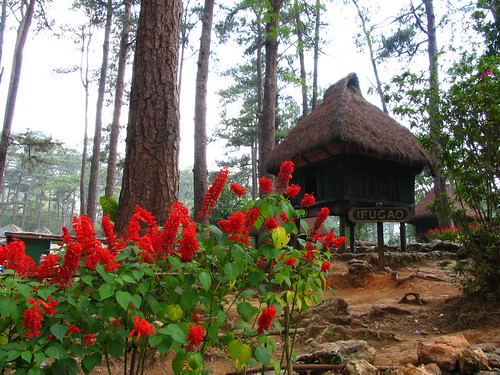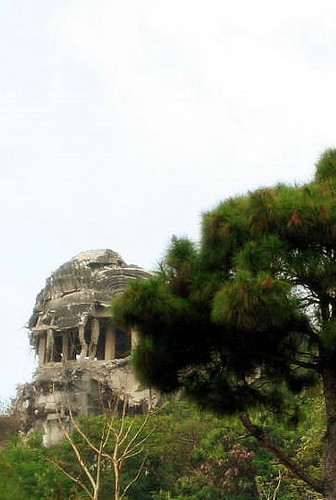Philippine Summer Destinations, part 4
Never a surfeit of summer destinations in the Philippines! My bucket list of places to visit runs endless. Fortunately for the peripatetic me, I’ve been to quite a few. Now that is summer, these holiday retreats beckon any soul.
Here are a three more choiced spots in the Philippines which I highly recommend.
Hilutungan Island, Cordova, Cebu
This small speck of an island in the central eastern seaboard of Cebu sports wide stretches of shifting sugar-fine white sand and clear clean warm waters. But Hilutungan Island’s claim to fame is its marine sanctuary which rapidly becoming as one of the most popular in central Philippines. The no-take haven boasts of tens of thousands of fishes of various sizes, from the elusive barracudas to meter-size bat fishes and the small anemone fishes, most of which literally would feed off your hands (travel tip: bring bread!). The island is also a renowned diving spot with a steep wall of corrals. It can be accessed by boat from any point in Mactan (a day’s rent goes from $25 to $75, depending on boat size). Snorkeling fee at anchor bays around the sanctuary is about $1.

Canon EOS 350D Digital, 1/100s, f/14, 18mm, ISO 100
approaching Hilutungan Island, Cordova, Cebu, the Philippines
Batanes
Semi-tropical and semi-temperate, Batanes is the most isolated province in the country. It is accessible only by plane as there are no passenger ferries between mainland Luzon and Batanes. A ticket from Manila via Tuguegarao (Cagayan) is about $100 one way. Relatively uninfluenced by the outside world, the islands evoke of pastoral and rocky vistas associated Ireland or even New Zealand. Of course, there are still the requisite white beaches like the famous swimming hole of Nakabuang in Sabtang Island. Now this is unmistakably tropical Philippines.

the Nakabuang beach in Sabtang island, Batanes, Northern Philippines
Canon EOS 350D Digital, 1/1250s, f/4.5, 18mm, ISO 100, -1/3EV
Baguio, Benguet
Baguio is the original summer capital of the Philippines. Established in the early 1900s by the Americans, the city is synonymous to mountain retreat- verdant, foggy and cool. Sitting some 1,500 meters above sea level, the temperature can be some 8 degrees (centigrade) lower than the lowlands’ in the day. At night, the air can be downright chilly. A bounty of pine trees, orchards of strawberry, tracts of flower farms and dramatic panoramic mine views awaits the city traveler. And wait, Baguio is itself a highly urbanized city so easy comforts are never far away. Metropolitan convenience is definitely part of its charm.

an Ifugao hut in the Botanical Gardens, Baguio, Benguet, the Philippines (picture taken by my wife)
Canon PowerShot Pro1, 1/250s, f/8, 7.2mm
part of an ongoing series on Philippine summer destinations:
part 1 - Alegre (Cebu), Pandanon Island (Bohol), Siquijor Island
part 2 (the isolation series) - the sandbar of Bais (Negros Oriental), Inampulugan Island (Guimaras), Mambucal (Negros Occidental)
part 3 - (Pagudpud, Bantayan, Dakak)






